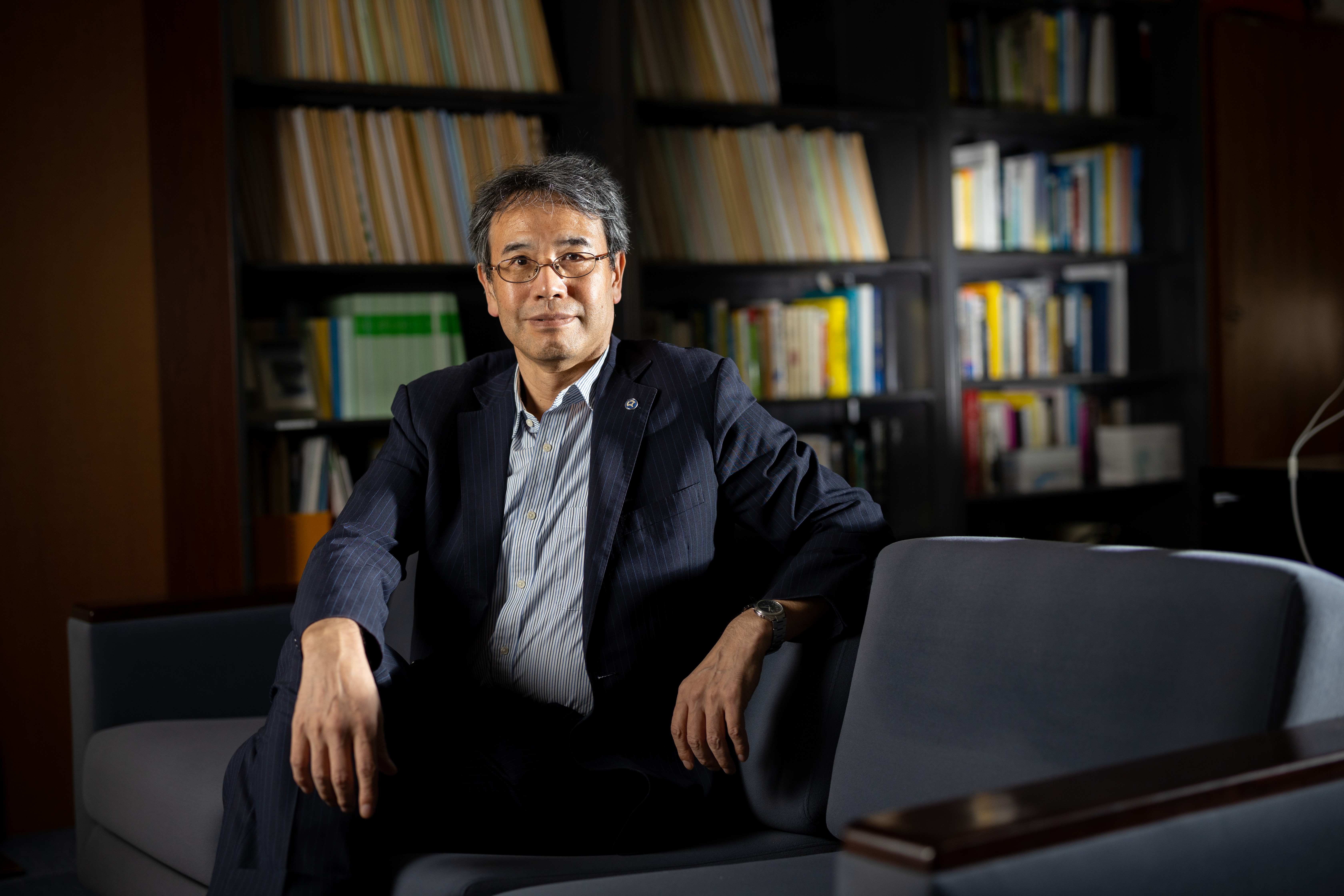
Professor Takashi Nakano, Director, Research Center for Nuclear Physics
"An encounter with difference leads to novel research and educational approaches"
A physicist full of passion and curiosity in discovering new truths behind natural phenomena, Dr. Nakano has been leading the Research Center for Nuclear Physics for over a decade. During this COVID-19 pandemic, he has been observing the status and trends of spread and convergence of infection through the eyes of a physicist and developed a simple and straightforward method to formulate a new indictor for monitoring the status of spread accurately. The validity of the formula has been proven by universal analysis of currently available data of COVID-19 spread across regions and countries.
Physics meets life science
Pursuing his curiosity and his interest in finding attenuation rate by drawing a changing curve, Dr. Nakano, together with a colleague, introduced a new indicator K value defined by K(d) =1 - N(d- 7 ) / N(d), where d is the number of days from the reference date, and N(d) and N(d-7) are the total number of infected people on days d and (d-7) . By using this K value, they suggest it should enable us to monitor change on a real time basis and evaluate measures against the spread of the virus from an economic perspective. He developed this idea with advice, comments, and suggestions by other scientists in different fields. “Having discussions and chats with established scientists in different fields is always a thought-provoking experience for me. I myself am a physicist, but the K value was created as a result of hints from scientists in other fields, such as medical science,” he mentions. Exchange of ideas among prominent scientists is mutually stimulating and brings about a synergy which sometimes leads to a new discovery or the development of a new or more sophisticated research approach/method, much like what happened with Dr. Nakano.

Synergy of different scientific fields, social sectors, and values
Synergy is at its maximum potential when the individual ability of the group is at or around the same level. This holds true for scientific collaboration as well. It is critical to successful collaboration for collaborators to all be of the same standard, known as “equal partners.” If you wish to conduct international joint research, it is pivotal to reach the international standard in terms of research ability. Dr. Nakano epitomizes this point, as he currently enjoys a worldwide network of researchers despite having little opportunity for international collaboration or cooperation with researchers in other fields when he started his career as a scientist decades ago. This is the source of his passion in establishing “Multidisciplinary PhD Program for Pioneering Quantum Beam Application”, under the scheme of the WISE Program initiated by the Ministry of Education, Culture, Sports, Science and Technology. Dr. Nakano expresses his expectations for the program, saying, “Cooperation between academia and industry both inside and outside of Japan towards the formulation of its curricula adds a rich dimension to this unique program. Opportunities in this program, such as studying abroad and performing research activities at graduate schools outside of their field, will allow students to build a network with people who could potentially become future colleagues or even supervisors while also opening up new paths for their career.” This program has become a new avenue for Dr. Nakano in pursuing synergy for educating scientists.
Text: Saori Obayashi/Edit: Christopher Bubb